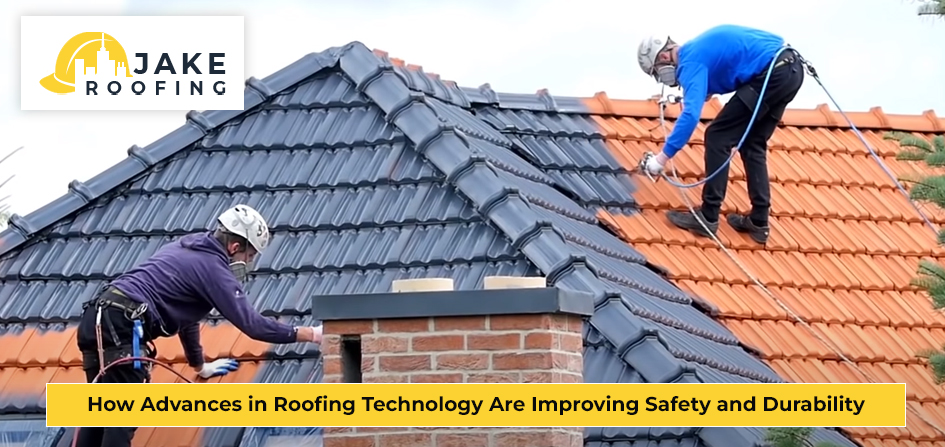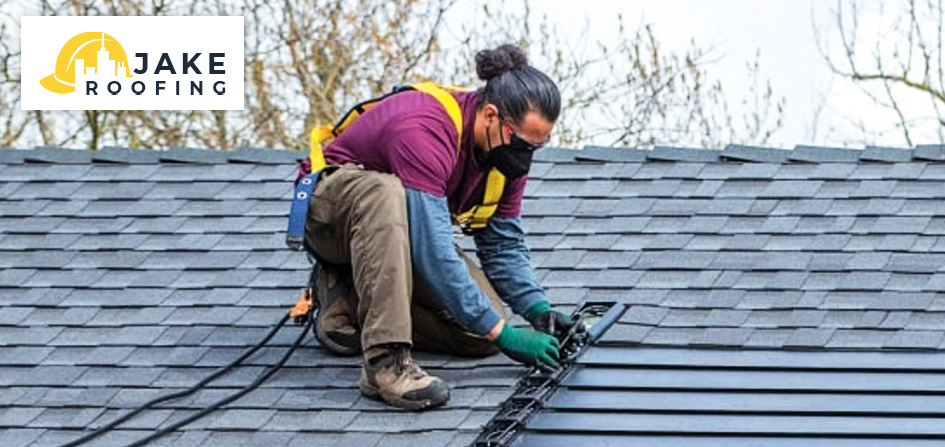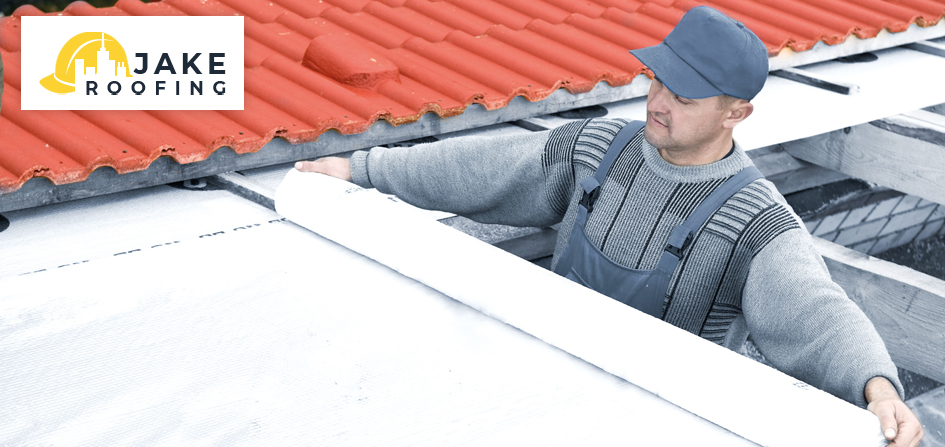How Advances in Roofing Technology Are Improving Safety and Durability
Roofing technology has come a long way in recent years, driven by the need for more durable, safer, and energy-efficient solutions. As the first line of defense against the elements, a roof’s performance is crucial to the integrity and safety of a home or building. With the increasing frequency of severe weather events and the growing awareness of the long-term impacts of construction materials, the roofing industry has responded with innovations that significantly enhance both safety and durability. These advancements not only protect properties more effectively but also contribute to longer-lasting roofs that require less maintenance and offer greater peace of mind to homeowners and builders alike.
The latest roofing technologies integrate cutting-edge materials, smart designs, and enhanced construction techniques that address common roofing challenges such as wear and tear, impact resistance, and environmental sustainability. From self-healing materials to smart monitoring systems, these innovations are setting new standards in the industry. Here, we explore the various ways in which advances in roofing technology are improving safety and durability, making roofs stronger, more resilient, and better equipped to withstand the test of time.

1. Impact-Resistant Roofing Materials
One of the most significant advances in roofing technology is the development of impact-resistant materials. These materials are designed to withstand severe weather conditions, such as hailstorms, high winds, and flying debris, which are becoming more common in many parts of the world.
Enhanced Durability
Impact-resistant shingles, for example, are made from a blend of asphalt and other materials that increase their toughness and flexibility. This combination allows the shingles to absorb the force of impacts without cracking or breaking. Some impact-resistant roofing products are reinforced with polymers or rubberized compounds, further enhancing their ability to resist damage.
Certification Standards
Many impact-resistant roofing materials meet or exceed the standards set by organizations such as Underwriters Laboratories (UL), which provides ratings based on a material’s ability to withstand impacts from various objects. Products that receive a Class 4 rating, the highest level, are capable of withstanding significant impacts without sustaining damage.
Long-Term Benefits
The use of impact-resistant materials not only improves safety but also extends the lifespan of the roof, reducing the need for frequent roof repairs and replacements. This durability translates to cost savings over time and a lower environmental impact due to fewer materials being discarded.
2. Fire-Resistant Roofing Systems
Fire resistance is another critical aspect of roofing technology, particularly in regions prone to wildfires. Advances in fire-resistant roofing systems have made roofs safer and more capable of protecting homes and buildings from fire hazards.
Non-Combustible Materials
Modern fire-resistant roofing systems often incorporate non-combustible materials such as metal, tile, and slate. These materials do not ignite when exposed to fire, significantly reducing the risk of a roof fire spreading. Metal roofing, in particular, is highly regarded for its fire-resistant properties, as it can withstand high temperatures without warping or melting.
Fire-Resistant Coatings
In addition to using non-combustible materials, fire-resistant roofing systems may also include specialized coatings that enhance their ability to resist fire. These coatings can be applied to a variety of roofing materials to improve their fire performance, creating an additional barrier against flames and heat.
Building Codes and Standards
Advancements in fire-resistant roofing technology have also led to stricter building codes and standards in fire-prone areas. These regulations often require the use of fire-resistant materials in new construction and renovations, ensuring that buildings are better protected against the threat of wildfires.
3. Self-Healing Roofing Materials
One of the most exciting developments in roofing technology is the advent of self-healing materials. These materials can automatically repair minor damages, such as small cracks or punctures, without the need for human intervention.
How It Works
Self-healing roofing materials are typically made from a composite of asphalt and special polymers that have the ability to flow and fill in cracks when heated by the sun. When damage occurs, the material responds by softening and filling in the gap, effectively “healing” itself. This process can happen repeatedly, extending the lifespan of the roofing material.
Benefits of Self-Healing Materials
The main advantage of self-healing roofing materials is their ability to prolong the life of the roof by preventing small damages from becoming larger, more costly issues. This technology reduces the need for frequent maintenance and repairs, making it a cost-effective solution for homeowners.
Applications and Future Potential
While currently most common in asphalt shingles, self-healing technology is being explored for use in other roofing materials, such as membranes and coatings. As the technology continues to evolve, we can expect to see broader applications and more widespread adoption in the roofing industry.
4. Advanced Roofing Underlayments
Roofing underlayment is a critical component of a roofing system, providing an additional layer of protection between the roof deck and the roofing material. Advances in underlayment technology have significantly improved the safety and durability of roofs.
Synthetic Underlayments
Traditional roofing underlayments, such as felt paper, have been largely replaced by synthetic underlayments, which offer superior performance. Synthetic underlayments are typically made from polypropylene or polyethylene, making them lighter, stronger, and more resistant to tears and water damage.
Enhanced Waterproofing
Modern synthetic underlayments are designed to provide enhanced waterproofing, preventing moisture from penetrating the roof deck. This is particularly important in areas prone to heavy rainfall or snow, where water infiltration can lead to rot, mold, and structural damage.
Breathability and Ventilation
Some advanced underlayments are also breathable, allowing moisture vapor to escape from the roof deck while preventing water from entering. This helps to maintain a dry, healthy roof structure and reduces the risk of mold and mildew growth.

5. Smart Roofing Systems
The integration of smart technology into roofing systems is another major advancement that is improving safety and durability. Smart roofing systems can monitor the condition of a roof in real-time, providing valuable data and alerts that help prevent damage and extend the roof’s lifespan.
Sensors and Monitoring
Smart roofing systems are equipped with sensors that can detect changes in temperature, humidity, and even structural movement. These sensors can alert homeowners or building managers to potential issues, such as leaks or ice dams, before they cause significant damage.
Predictive Maintenance
By continuously monitoring the roof’s condition, smart roofing systems can predict when maintenance is needed, allowing for timely repairs that prevent minor issues from escalating. This proactive approach to roof maintenance helps ensure that the roof remains in optimal condition for longer.
Integration with Smart Home Systems
Smart roofing systems can be integrated with other smart home technologies, providing a seamless way to manage the overall safety and efficiency of the home. For example, smart thermostats can work in conjunction with roofing sensors to optimize heating and cooling based on the roof’s condition.
6. Energy-Efficient Roofing Technologies
Energy efficiency is a key focus in modern roofing technology, with advancements aimed at reducing energy consumption and lowering greenhouse gas emissions.
Cool Roofing
Cool roofing technology involves the use of materials that reflect more sunlight and absorb less heat than traditional roofing materials. This reduces the amount of heat that enters the building, lowering the demand for air conditioning and reducing energy costs. Cool roofing materials include reflective coatings, tiles, and metal roofs with reflective finishes.
Solar Roofing
Solar roofing systems, which integrate photovoltaic cells into the roofing material, allow homeowners to generate renewable energy directly from their roofs. Solar shingles and tiles are becoming increasingly popular as they offer the benefits of solar energy without compromising the aesthetics of the home. These systems not only provide energy savings but also contribute to a more sustainable environment.
Insulated Roofing Panels
Insulated roofing panels combine the roofing material with built-in insulation, providing a higher level of thermal performance. These panels help maintain a consistent indoor temperature, reducing the need for heating and cooling and improving overall energy efficiency.
7. Wind-Resistant Roofing Designs
High winds are a significant threat to roofs, particularly in areas prone to hurricanes and tornadoes. Advances in wind-resistant roofing designs are improving the ability of roofs to withstand these extreme weather events.
Aerodynamic Roof Shapes
Roof shapes and designs have been optimized to improve wind resistance. For example, hip roofs, which have slopes on all sides, are more aerodynamic than gable roofs, reducing wind pressure and the risk of uplift. Additionally, advances in fastening systems ensure that roofing materials are securely attached, preventing them from being blown off during high winds.
Reinforced Edges and Fasteners
Reinforced edges and advanced fastening systems are critical in wind-resistant roofing designs. These components are designed to prevent the edges of the roof from lifting during high winds, which is often the first point of failure in a windstorm. Stronger fasteners and adhesives ensure that the roofing materials remain securely attached to the roof deck.
Impact-Resistant Shingles
Impact-resistant shingles, which are designed to withstand debris impacts during windstorms, are also a key component of wind-resistant roofing systems. These shingles are made from flexible, durable materials that can absorb the force of impacts without cracking or breaking, providing an added layer of protection.
8. Sustainable and Recyclable Roofing Materials
Sustainability is increasingly important in the roofing industry, leading to the development of eco-friendly and recyclable roofing materials that reduce environmental impact.
Recycled Content Roofing
Many modern roofing materials are made with recycled content, including asphalt shingles made from recycled rubber and plastic, and metal roofs made from recycled steel or aluminum. These materials not only reduce the demand for new raw materials but also divert waste from landfills.
Biodegradable Roofing Materials
Biodegradable roofing materials, such as wood shingles and thatch, are designed to break down naturally at the end of their life cycle. While these materials are less common in modern construction, they offer a sustainable option for those looking to minimize their environmental footprint.
Energy-Efficient Production
Advances in the production of roofing materials have also focused on reducing energy consumption and greenhouse gas emissions. Manufacturers are increasingly using energy-efficient processes and renewable energy sources to produce roofing materials, further contributing to the sustainability of the industry.
9. Waterproofing Membranes
Waterproofing membranes are a critical component of modern roofing systems, providing an additional layer of protection against water infiltration. Advances in membrane technology have significantly improved the durability and performance of these products.
Single-Ply Membranes
Single-ply membranes, such as TPO (thermoplastic olefin) and EPDM (ethylene propylene diene monomer), are highly durable and resistant to UV radiation, chemicals, and punctures. These membranes are commonly used in flat and low-slope roofing applications, where water infiltration is a primary concern.
Liquid-Applied Membranes
Liquid-applied membranes offer a seamless waterproofing solution that can be applied to roofs of any shape or size. These membranes are typically made from rubberized asphalt or polyurethane and are ideal for complex roof designs where traditional membranes may be difficult to install.
Self-Adhering Membranes
Self-adhering membranes have simplified the installation process, reducing the need for adhesives and mechanical fasteners. These membranes are easy to install and provide a strong, watertight seal that protects the roof from water infiltration.

10. The Future of Roofing Technology
The future of roofing technology promises even greater advancements in safety and durability, driven by ongoing research and innovation.
Nanotechnology
Nanotechnology is expected to play a significant role in the development of new roofing materials. By manipulating materials at the molecular level, researchers can create roofing products that are stronger, lighter, and more resistant to environmental factors.
Smart Materials
Smart materials that can respond to environmental changes, such as temperature and humidity, are likely to become more prevalent in roofing systems. These materials could automatically adjust their properties to improve energy efficiency, durability, and weather resistance.
Advanced Monitoring Systems
Future advancements in monitoring technology will likely lead to even more sophisticated smart roofing systems. These systems could include drones or robotic devices that regularly inspect the roof for damage, providing real-time data and automated maintenance solutions.
The advancements in roofing technology are revolutionizing the industry, making roofs safer, more durable, and more sustainable than ever before. From impact-resistant materials to smart monitoring systems, these innovations are not only protecting homes and buildings more effectively but also contributing to longer-lasting roofs that require less maintenance. As research and development continue, the future of roofing technology promises even more exciting developments that will further enhance the safety, durability, and sustainability of our built environment.
Frequently Asked Questions
Impact-resistant roofing materials are designed to withstand severe weather conditions, such as hail and high winds. They are made from durable, flexible materials that absorb the force of impacts without cracking or breaking, reducing the risk of damage during storms.
Self-healing roofing materials can automatically repair minor damages, such as small cracks or punctures, when heated by the sun. This technology extends the lifespan of the roof by preventing small issues from becoming larger, more costly problems.
Smart roofing technology includes sensors and monitoring systems that detect changes in the roof’s condition, such as leaks or structural movement. These systems provide real-time data and alerts, allowing for timely maintenance and preventing significant damage.
Green roofing materials, such as recycled content roofing and biodegradable options, reduce environmental impact by minimizing the use of new raw materials and diverting waste from landfills. These materials also contribute to energy efficiency and can improve the overall sustainability of a building.
